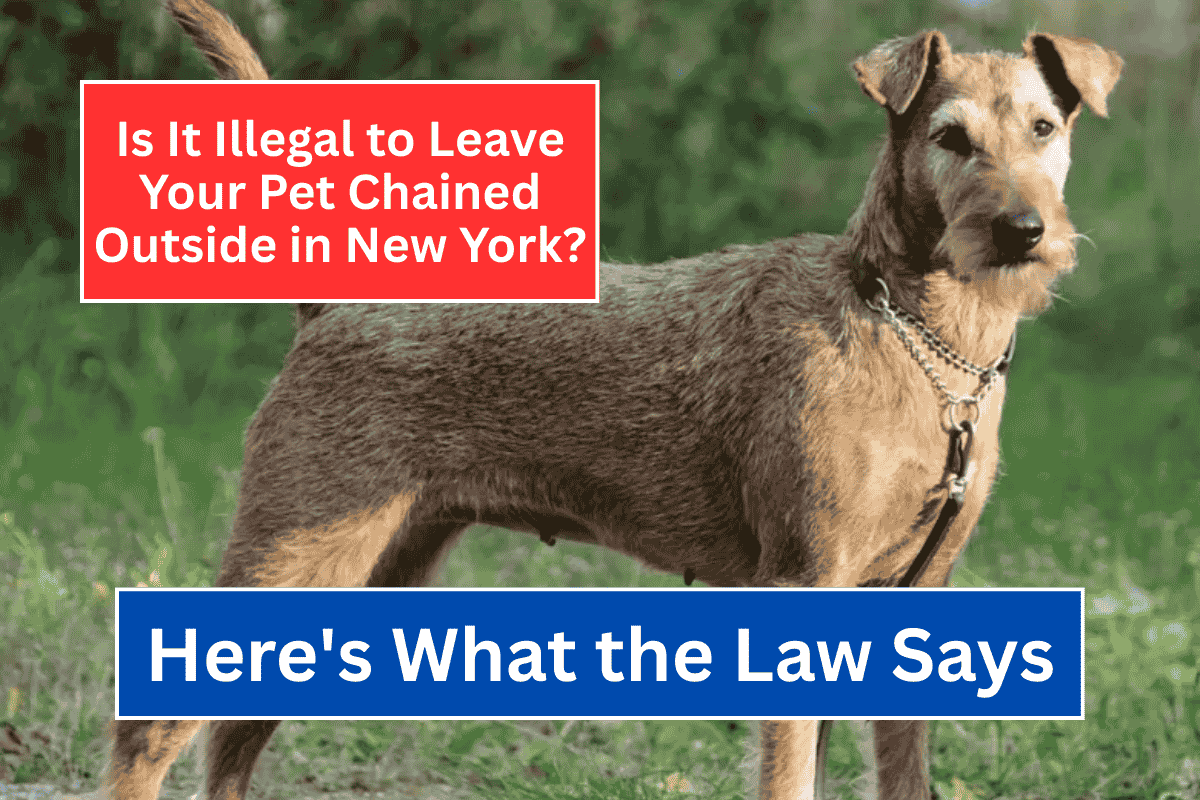In New York, particularly in areas like the Town of Champlain, the practice of chaining dogs outside for prolonged periods is regulated to protect the health, safety, and well-being of dogs.
This regulation is designed to prevent cruel treatment, as tethering dogs outside can lead to serious issues, such as physical injury, emotional distress, and potential aggression.
The law aims to ensure that dogs are not subjected to neglect or harsh conditions, including being tied to stationary objects outdoors.
Tethering Dogs: What Does the Law Say?
The Town of Champlain has passed a local law that specifically addresses the issue of tethering or confining dogs outdoors. According to this law, tethering a dog to a stationary object for an extended period is considered inhumane and dangerous for the animal.
Tethering can result in physical harm, such as tangling, and can also lead to behavioral issues in dogs. Dogs left outdoors in this manner are often subjected to neglect, including a lack of food, water, and shelter.
The law also emphasizes that dogs confined outside for too long often display signs of distress, such as excessive vocalization, which can disrupt the peace in residential areas. The law aims to reduce these situations and protect both the dogs and the community.
Prohibited Tethering Practices
The law prohibits several types of tethering practices to ensure the safety and comfort of dogs:
Health and Safety: It is unlawful to tether a dog in a way that endangers its health, safety, or well-being. This includes tethering a dog in a manner that limits its ability to move, urinate, or defecate in a designated area.
Supervision Requirement: Dogs must not be tethered outside unless a responsible person is present to supervise the animal. Leaving a dog tethered outside unsupervised is illegal.
Conditions for Tethering: Dogs may not be tethered if they are under six months of age, nursing, in heat, or suffering from health issues that could worsen with tethering. Additionally, dogs must have access to shelter, shade, and water, and cannot be left tethered in extreme weather conditions.
Nighttime Restrictions: Tethering a dog outside between 11:00 PM and 6:00 AM is not allowed. This rule is in place to protect the dog from the risks associated with being left outside at night.
Specifications for Tethering Restraints and Enclosures
The law specifies the type of restraints and enclosures that can be used for tethering dogs to ensure they are safe and comfortable:
Restraints: Dogs must not be tethered with choke chains or pinch collars. Instead, they should be tethered with a harness or collar made from durable, non-metallic material such as nylon or leather.
Tether Length: The length of a tether should be at least 10 feet or five times the length of the dog’s body (whichever is greater). The tether must be free of tangles and attached in a way that prevents the dog from becoming entangled or injured.
Shelter and Enclosure: Dogs must have access to proper shelter that protects them from the elements. The shelter should be fully enclosed on all sides, with a waterproof roof, a solid floor, and clean bedding. It should also be appropriately sized to allow the dog to stand, turn around, and lie down comfortably.
Special Restrictions Based on Weather
The law outlines that dogs cannot be tethered during weather alerts, such as extreme heat, cold, storms, or other weather conditions that could harm the dog. During such events, dogs should be brought indoors or kept in a safe, temperature-controlled environment.
Exceptions to the Law
There are some exceptions to the tethering law:
Campgrounds: Tethering a dog in compliance with the regulations of a campground area is exempt from these rules.
Short-Term Tethering: If a dog is tethered for less than 15 minutes in a public location, the law does not apply.
Enforcement and Penalties
The law is enforced by local animal control officers, law enforcement, and any other designated officers. Violating the tethering regulations can result in fines and penalties:
First Offense: A civil penalty of $250, which may include an educational component at the judge’s discretion.
Second Offense: A fine of $500 and/or an educational component.
Third Offense: A fine of up to $1,000, with potential imprisonment for up to 15 days, surrender of the dog, and additional fees related to investigation and prosecution.
Dogs may also be seized under court order if the owner violates the law, and the owner will be responsible for the costs of investigation and prosecution.
In New York, particularly in areas like Champlain, leaving your dog tethered outside for prolonged periods is illegal due to the potential harm it can cause to the animal.
The law provides clear guidelines to ensure that dogs are treated humanely and that they have access to food, water, shelter, and proper supervision.
The goal of these regulations is to prevent neglect and improve the welfare of dogs. Pet owners must understand these laws to avoid legal penalties and ensure their pets’ safety.












